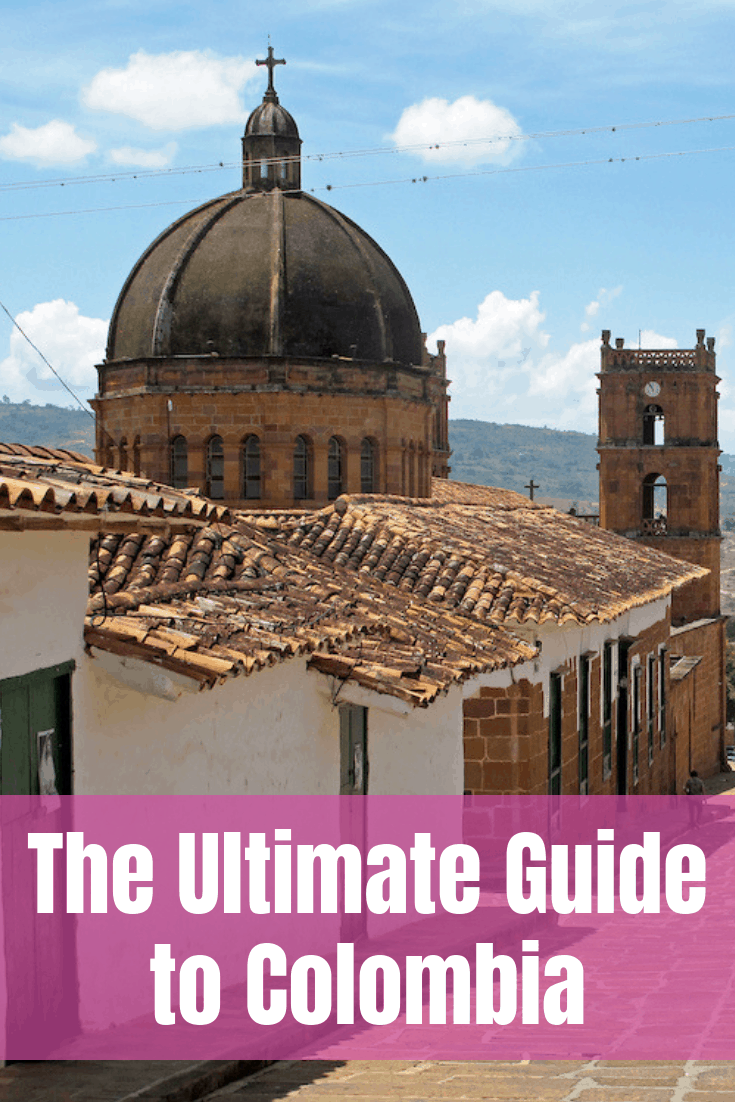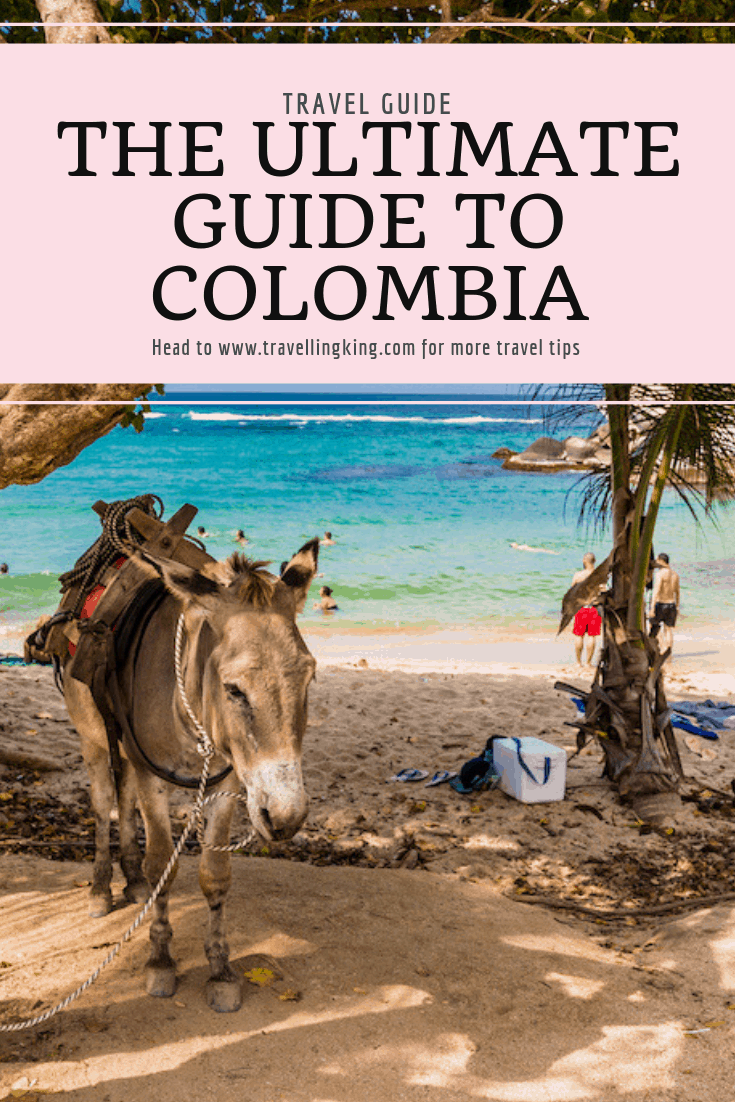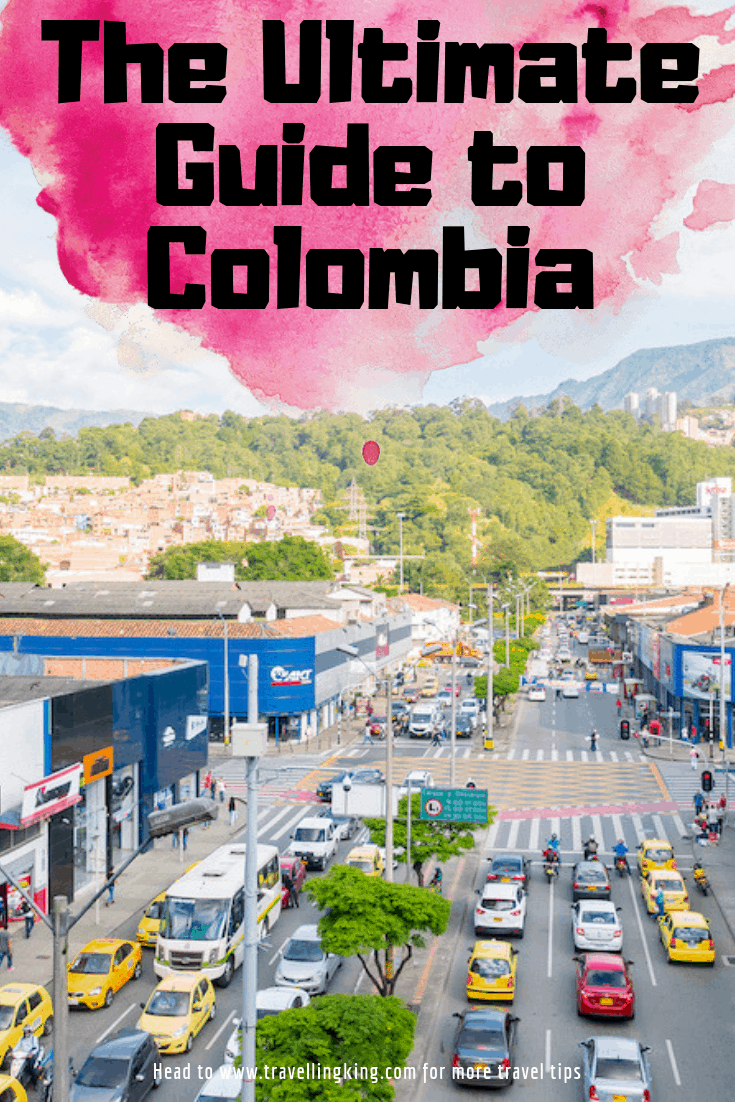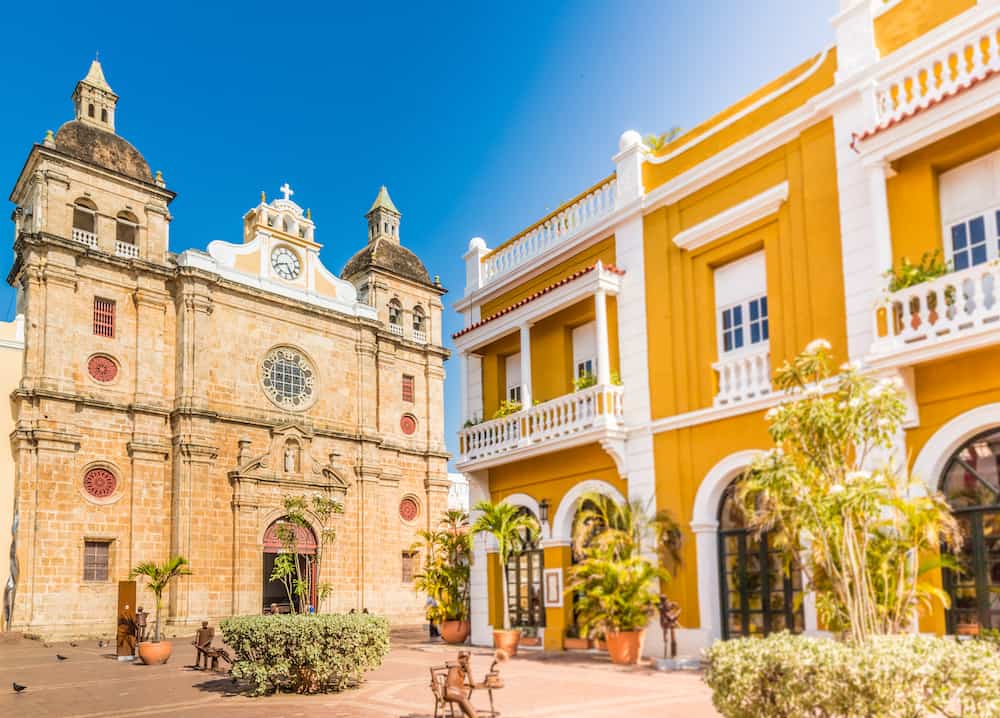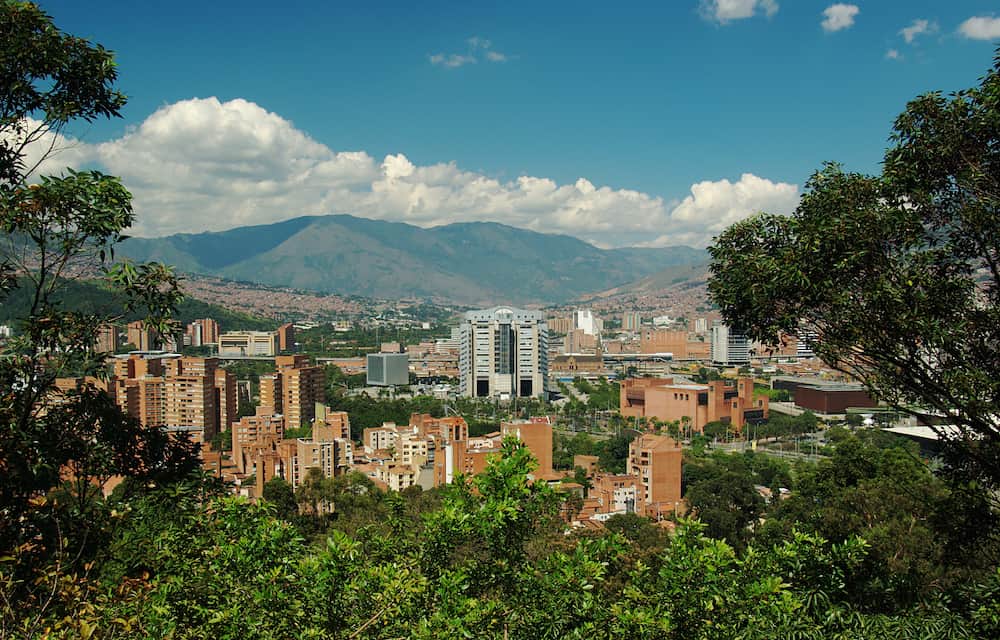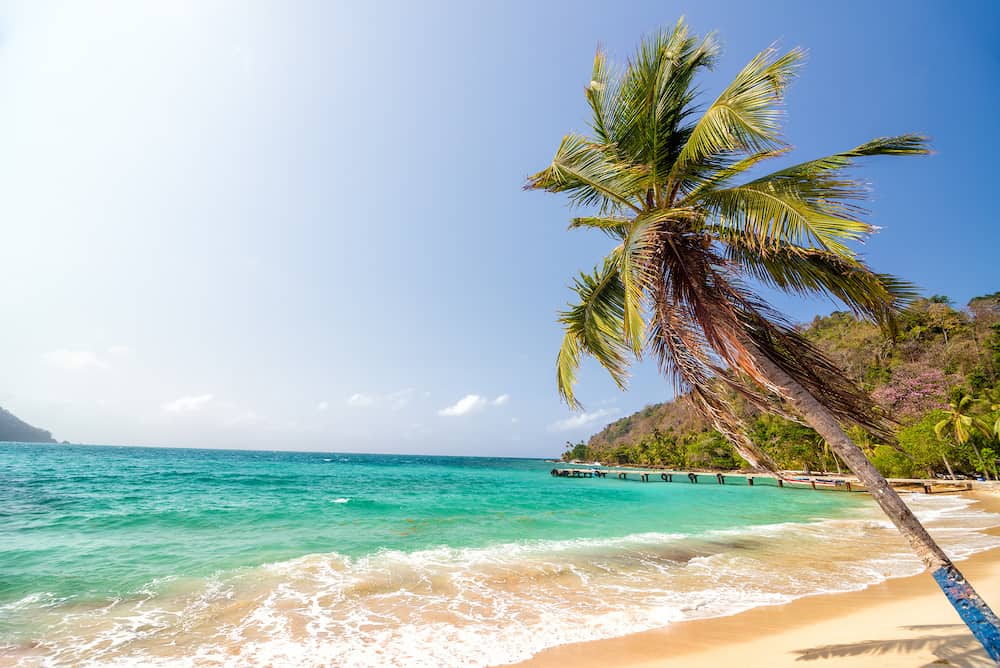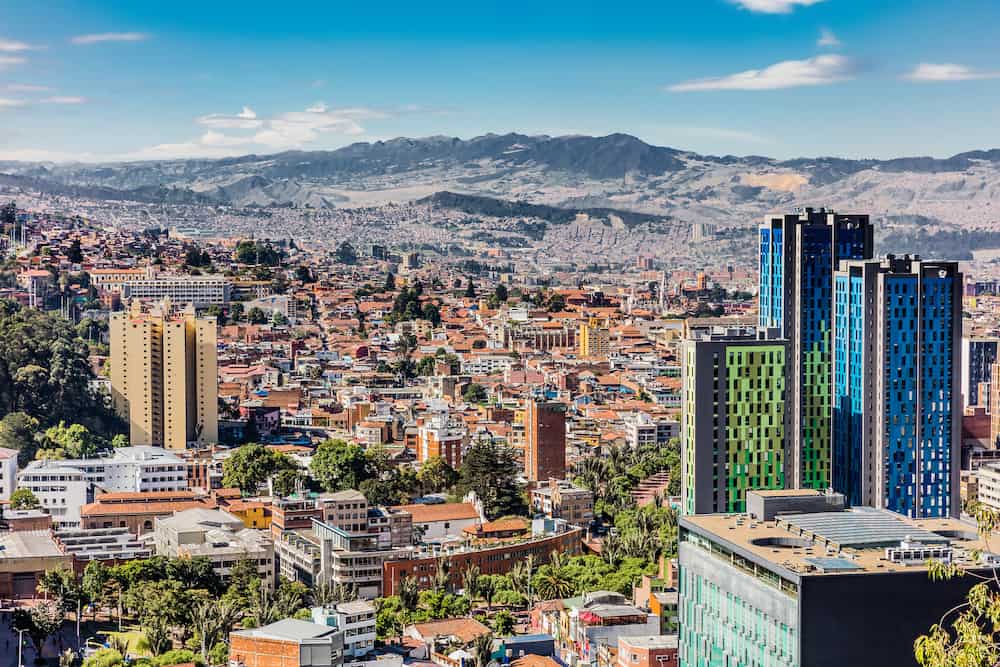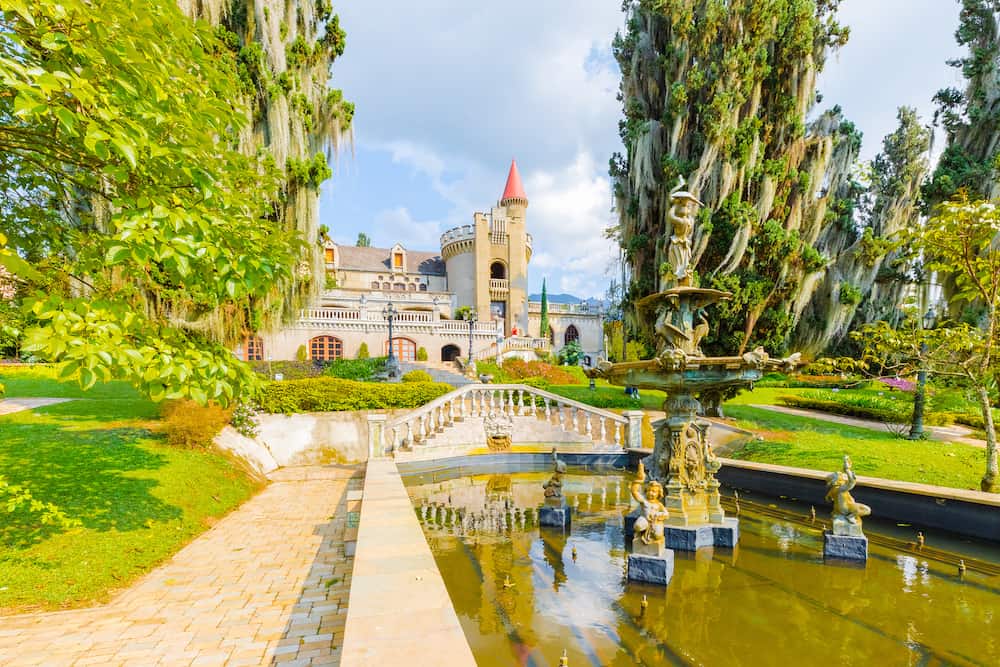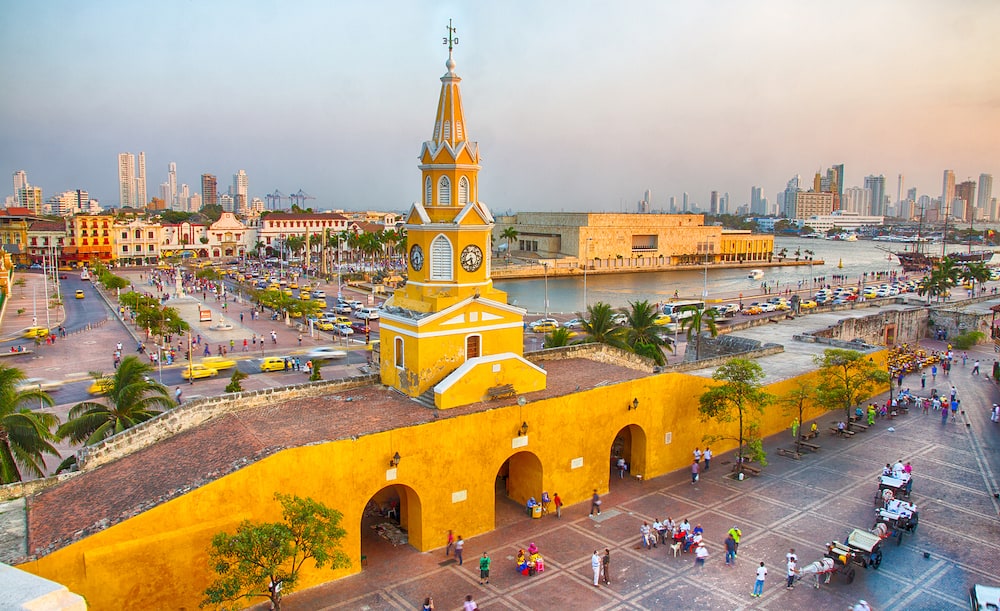The Ultimate Guide to Colombia
I love recommending people to visit Colombia for a few reasons. First and foremost, it’s hand down my favorite country in the world. More on that in a bit. Second off, everyone always seems to be astounded that Colombia is a safe place to visit.
Yes, I’m not going to deny that the country has had a violent history. But it’s for that reason that I think Colombia has become so hospitable to foreign visitors.
Colombians are eager to change the outsider’s perspective of their country and are quick to denounce the men, like Pablo Escobar, who gave their country such a bad reputation. In fact, Colombia tops Gallup’s “Happiest Countries List” year after year.
I struggle to find the words to nudge someone towards Colombia, and usually just fall back on saying something like “the vibe of the country is contagious.” The energy of the people is one of the best things about Colombia.
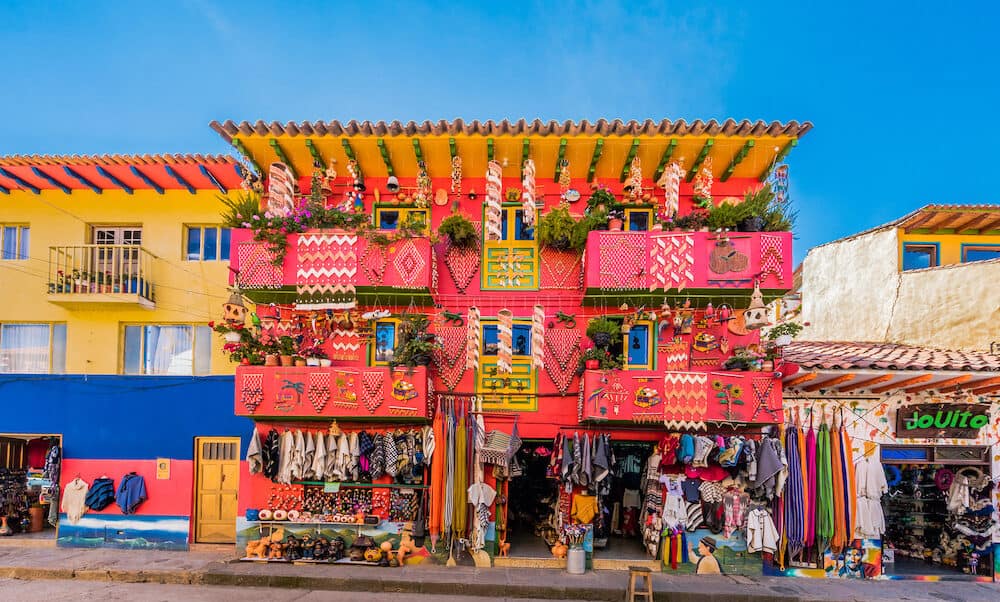
It’s hard not to feel welcome in a country where dancing and fresh produce is found on every street corner. Everyone wants to know your story and will ask you the same question, “Why did you come to Colombia?” You’ll feel like a celebrity.
Yet, there is also an abundance of natural beauty and places to visit in Colombia. The country is the second most bio-diverse place on earth behind Brazil and has 23 of the 27 major ecosystems on earth. The high Andes mountains tower over idyllic villages, inviting athletic travelers to find their trekking limit.
The Pacific Coast is where humpback whales reunite each July for mating, allowing for ocean-lovers to get intimate with one of the most fascinating animals in the world. The Caribbean sets a backdrop for two incredible cities, Santa Marta and Cartagena, each with colonial histories to please history buffs.
If you want to experience the Amazon, head to Leticia, a place with affordable flights from any of Colombia’s major cities.
Finally, Colombia is home to the best coffee in the world. The rolling hills of the Andes are personally my favorite place to explore, drinking black coffee in the early morning with locals and exploring waterfalls in the afternoon.
The main reason I urge people to visit Colombia is that I want them to experience it before it becomes too popular.
The country is ready for a tourism boom, and I hope that you get there beforehand. Trust me, you are going to fall in love with the place and the true South American experience it provides.
Plan your trip
Save on fees abroad with the Wise Card—use it at ATMs, restaurants, and for flights or hotels in over 150 countries. Manage 40+ currencies in real-time with the Wise app.
Need Help Planning?
- Cheap Flights: Find the best deals.
- Accommodation: From hostels to luxury stays.
- Car Rental: Affordable options worldwide.
- Sightseeing Tours: Explore without breaking the bank.
- Travel Adapter: One adapter for all your needs.
- Travel Insurance: Don’t risk it—stay covered.
This post includes affiliate links. Read my full disclosure and content policy.
How to get to Colombia
Colombia’s tourism boom is partially due to its accessibility. Arriving from or through the United States is not just quick, it’s affordable. Budget airlines Spirit and Jet Blue have connections through Fort Lauderdale to each of Colombia’s international airports in Barranquilla, Bogotá, Cali, Cartagena, and Medellín.
If budget airlines aren’t your thing (which I totally understand) major airlines like American, Delta, and United also fly all over Colombia. If you’re flying from Australia, Asia, or Africa, chances are you will connect flights in Europe with Avianca, Iberia, or Air France.
I recommend scouting out tickets for a few weeks to ensure you get the best price possible. You may be surprised at how cheap you can arrive. Colombia is typically the cheapest place to fly in South America, making it a good place to start your continental journey.
If you are coming to Colombia from South America, you may be surprised to find out that you cannot cross the border by land. The Darien Gap is one of the few places on earth where nature has conquered humans, making it impossible to build a road or a navigable way through.
If you are arriving from Ecuador or Venezuela, I recommend taking the bus unless you are in a rush to get to a specific place. Flying is much more expensive, but an option as well. Avianca and Viva Colombia are two airlines that I recommend for inter-continental flights.
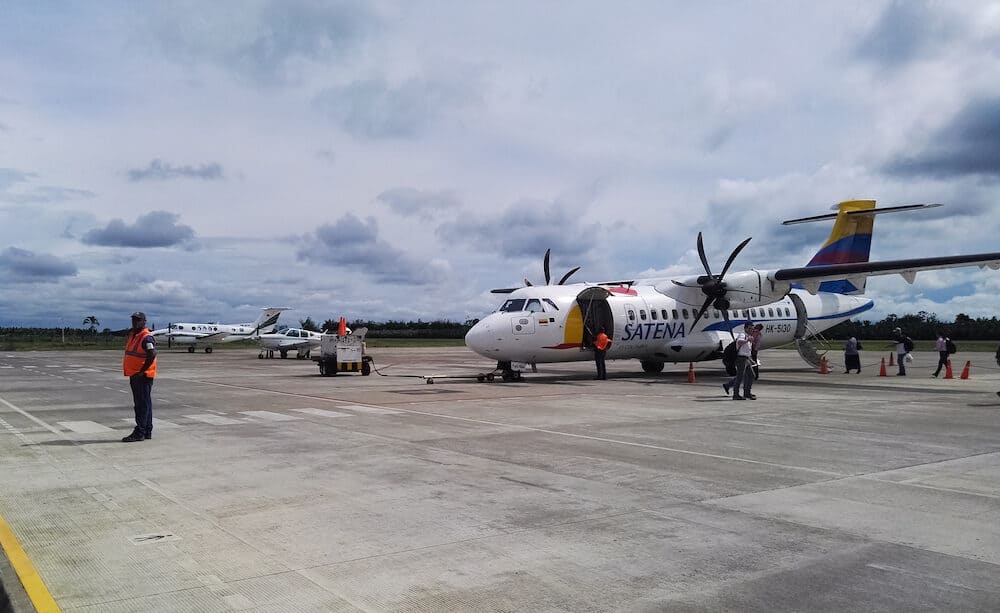
What to expect in Colombia
Language
Spanish is the official language of Colombia, even though each region has a unique accent and dialect. Bogotá, for example, is famous for having the most comprehensible Spanish, making it a good place to get more comfortable with the language.
Most hostels will have bilingual receptionists, but you will be able to get off the beaten path much easier with more language skills. Learning a few simple phrases will go a long way in navigating the country.
If you’re planning to travel to Colombia for longer than a few weeks, I recommend taking a Spanish course to begin your trip.
You can find affordable Spanish academies in each of Colombia’s major cities, although I highly recommend Medellín as a place to do so. Taking classes for a week or two is also a great way to meet other travelers who are in the same boat.
Currency
The Colombian Peso (COP) is the official currency of Colombia. You will be surprised at how many different places you will be able to use a card but plan to use primarily cash for your purchases.
I always recommend visiting your bank beforehand to become familiar with the different fees associated with international transactions. I normally try and withdrawal the maximum amount of money from ATM’s to limit my bank fees.
Normally the ATM’s only distribute large bills, which can be a hassle because small mom and pop shops often cannot break the bills. If you ever need to break a bill, I recommend visiting a grocery store and buying the cheapest thing (normally a pack of gum).
Tipping
Tipping is not very widely practiced in Colombia. At higher-end restaurants, you will find a service charge added at the bottom of your bill, which serves the same purpose as a tip.
The other time that you should be prepared to tip is when a bellboy helps with your bags or a tour guide provides exceptional service. Tips are hardly ever expected in Colombia, but of course, they are always appreciated.
Safety
Safety should always be a concern when planning a trip abroad, and Colombia is no exception. Due to the country’s violent history, I always sense hesitation in first-time visitors. After a few days in the country though, it’s quite hard not to feel at home.
Colombians are over the top friendly. However, there are some things that you should definitely be wary of. Do not walk alone at night. This is always my number one rule when traveling, and it’s helped me stay safe all around the world. The most common crimes are petty theft and scams.
When you visit large tourist attractions, it’s important to be extra cautious instead of letting your guard down. It’s important to always remain attentive to your belongings and your surroundings.
I always recommend carrying your wallet in your front pocket, making it much more difficult to pickpocket. It’s also really important to be extra vigilant when using public transportation. You’ll hear a lot of Colombians tell you “no dar papaya”, which is essentially warning you against becoming an easy target.
Avoid wearing fancy jewelry and clothing. Don’t take your brand new iPhone out to take pictures in a crowded marketplace. The more you try to blend in with locals in Colombia, the less trouble you are going to have. Finally, do not ever accept drinks from strangers.
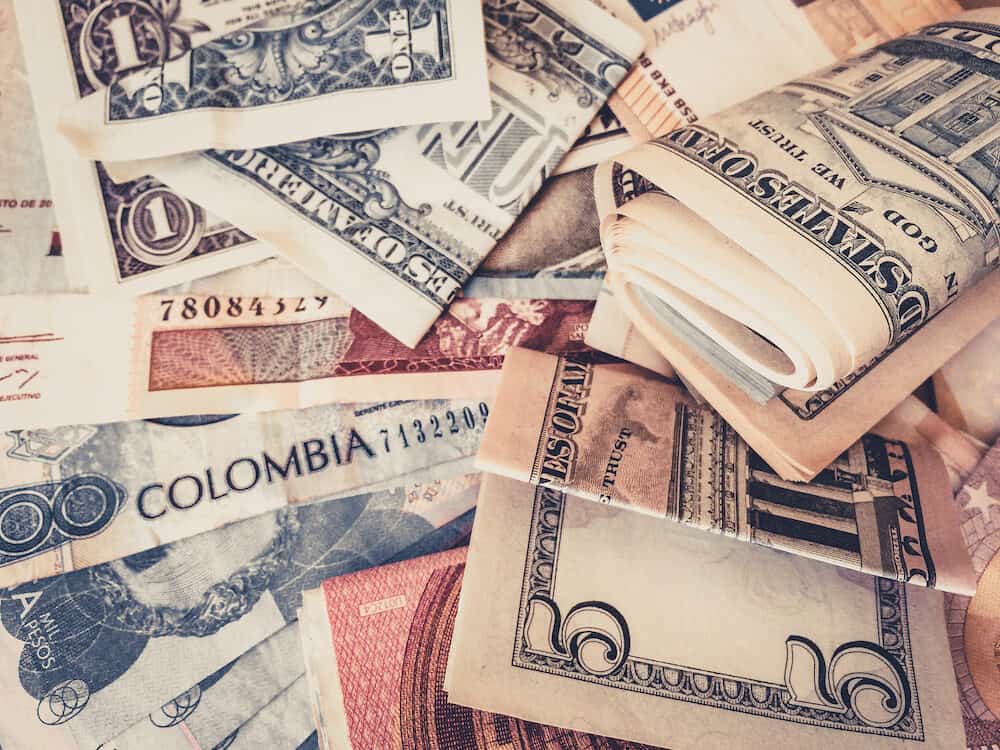
How to get around Colombia
Transportation in Colombia just makes sense. Each major city has one or two central bus terminals where you can catch a bus from one city to the next. Timetables and other essential travel information can always be found online as well.
While you can show up and simply buy a ticket for the next available bus, I recommend going to the bus station beforehand and reserving a seat.
This will save you a bunch of hassle in the long run, especially if the busses all happen to be sold out. I also recommend doing some research on how to arrive at your destination from the bus terminal once you arrive in your destination city.
Confused travelers are the easiest ones to scam, and a little bit of knowledge can go a long way in keeping you safe.
If you’re planning on going cross country, say Bogota to Cartagena or Medellín to Santa Marta, I recommend looking into flying as well.
Viva Colombia, a new budget airline that flies domestically in Colombia, can oftentimes be cheaper than taking an 18-hour bus ride. Like most budget airlines, Viva Colombia has a lot of hidden charges.
So if you are planning to travel with them, do your research on how many bags fly free, if you need to print your ticket beforehand, or if you need to pay in order to sit next to your travel buddy.
Public transportation is always a topic of conversation in Colombia, especially in the rival cities of Medellín and Bogota. Medellín boasts a sparkling clean and efficient metro system — a big source of pride for the city.
Bogotá, on the other hand, seems to always be complaining about the Transmilenio, its own version of the metro. The traffic in the city is horrendous and these busses don’t make things much better. Using public transportation is a great way to immerse yourself in the city and save some money.
If you are in a hurry, I recommend using Uber. This takes away the hassle of having to describe to your taxi driver exactly where you want to arrive.
Also, you will know the price of your ride beforehand, making it easy to avoid being scammed. If you speak Spanish well, then go ahead and use taxis! You’ll find prices are very comparable.
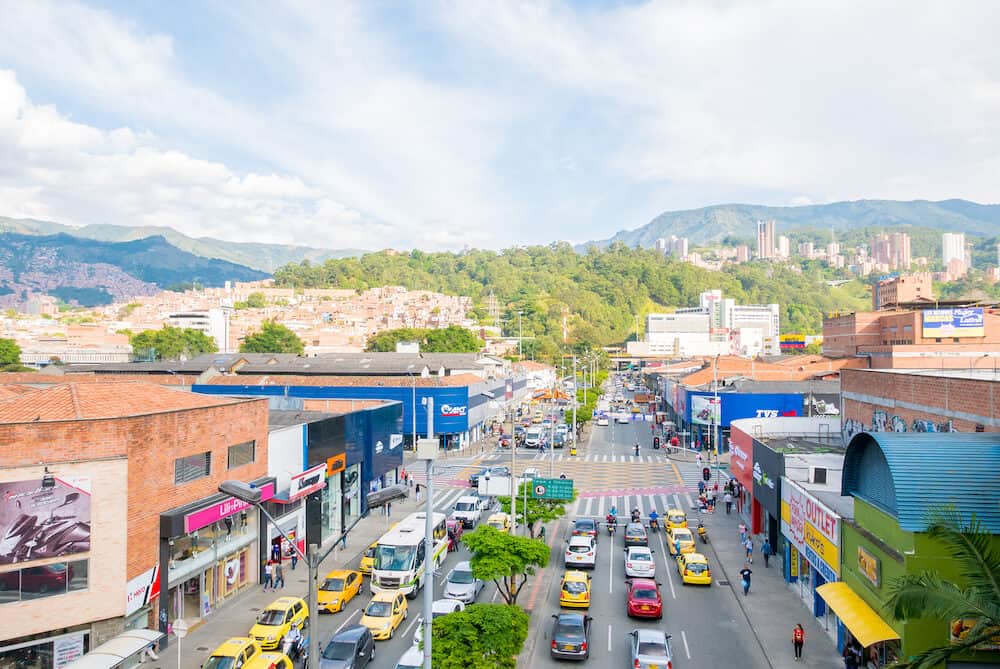
The best time to visit Colombia
Colombia doesn’t experience much of a summer or winter due to its location near the equator. Also, there are so many different micro-climates in the country, making it hard to say in general a good time may be to visit Colombia.
What does fluctuate is the amount of rain that the country receives. Between May to July and October to December, the Andes mountains receive a lot of rainfall.
The rainy months on the Caribbean coast are from September to October. The rain is not going to spoil your trip. I just recommend bringing some rain gear so that you are prepared when the downpour sneaks up.
One time of year I recommend avoiding Colombia is Semana Santa, or Holy Week, which falls during the Easter holiday. This is when Colombians travel themselves, making it difficult to book hotels at major tourist destinations.
If you are a festival-goer, there are a few peak times that I recommend visiting Colombia. Carnaval, which takes place in Barranquilla, typically falls in Mid-February.
This Mardi Gras celebration is the second-largest in South America, after Rio de Janeiro of course. In August, Medellín hosts the Festival of Flowers. This festival is an incredible time to visit the city because there is something going on every single day.
If salsa dancing is your thing, then plan a trip to Cali right after Christmas time. There is no bad time to visit Colombia, but do a bit of research beforehand so you are prepared for anything.
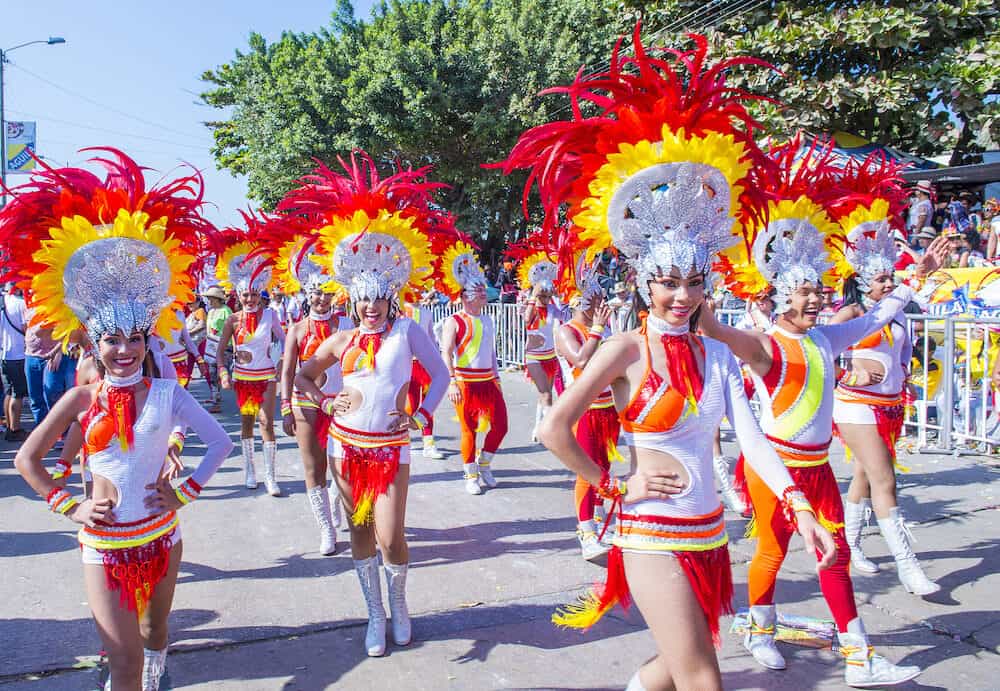
Things to do in Colombia
Learn About and Drink Coffee
Whenever I’m traveling in Latin America, I end up in coffee growing regions. Yes, I’m a huge coffee drinker, but that’s not the only thing that draws me to coffee-growing regions.
Coffee requires a certain elevation and climate in order to grow. More often than not, the areas are filled with pristine natural beauty and an agreeable climate for exploring.
So I’ll wake up in the morning, drink a cup of fresh coffee, and then spend my day exploring nature. In Colombia, each coffee village is surrounded by breathtaking hikes, waterfalls, and mountain landscapes. Also, the villages themselves tend to be cultural icons reminiscent of the Wild West.
You’ll see horses tied up outside of the local church, and locals bartering with one another at the early morning pop-up market. Colombia’s “zona cafetera” or coffee-growing surrounds three major cities: Manizales, Pereira, and Armenia.
These cities are all great launching points into smaller, more remote villages. My favorite places to visit are Jericó, Jardín, Salento, Filandia, Buena Vista, Pijao, and Santuario.
One unique thing to do in Colombia is a coffee tour. These tours are comprehensive, taking you through each step of the coffee growing and brewing process.
Tours are great, but simply sipping coffee in small town plazas is an experience in itself. If you want to get off the beaten path in Colombia, visiting small villages in the zona cafetera is the best way to do so.
Recommended tours:

Dance Salsa
Colombians love to party. You’ll see a different side of your new friends when you propose the idea of going to dance salsa for the night. Salsa is ingrained in Colombians, and they will dance into the hours of the night without stopping.
Each person has their own salsa style, depending on where they are from. Medellín and Bogotá dancers are more technical, while Cali dancers are known for their flair.
If you want to learn how to dance salsa, go to Cali. You can find salsa instructors and spend a few days, a week, or even months mastering the dance. Once you’ve got the basic step down, get yourself on the dance floor.
Each city has spots where people flock to dance. If you want to have a good night out and really experience Colombian culture, the dance floor is the place to be.
Recommended tour:
- Bogota Salsa Tour Including Dance Lesson
- Experience Cartagena Salsa Nightlife and fund a non profit: funwithapurpose

Trek in Colombia
Colombia may not have the same high-altitude trekking as Peru, but it still has plenty of treks and national parks to satisfy the outdoorsy traveler. The most renown trek in the country is from Santa Marta to the Lost City or Ciudad Perdida.
The hike, which can take anywhere from 3 to 6 days, goes through the dense rainforest of the Sierra Nevada mountain range. Day by day, you’ll pass through small indigenous villages, allowing you to learn about the rich culture of the area.
The area happens to be one of the most biodiverse regions in the world, so you will also experience flora and fauna unlike ever before.
The pinnacle, however, is at the end of the trek when you arrive at the Lost City. The Lost City was built around 750 AD by the Tayronas, who inhabited the region before the arrival of the Spanish. This pre-Colombian site is one of the country’s most treasured artifacts.
Another very popular hike in Colombia is the Valle de Cocora, which boasts the largest palm trees in the world. The valley sits at the entrance to Los Nevados National Park, a spectacular place to visit for those seeking more demanding treks.
El Cocuy National Park is very different from the Lost City or Los Nevados, but features some of the tallest mountains in the Colombian Andes.
As with any treks you plan to do in Colombia, do your research beforehand. Oftentimes areas can be affected by seasonal closures or weather, making them inaccessible.
However, those who are willing to put in the work to explore Colombia’s natural wealth are rewarded with a natural experience unlike ever before.
Recommended tours:
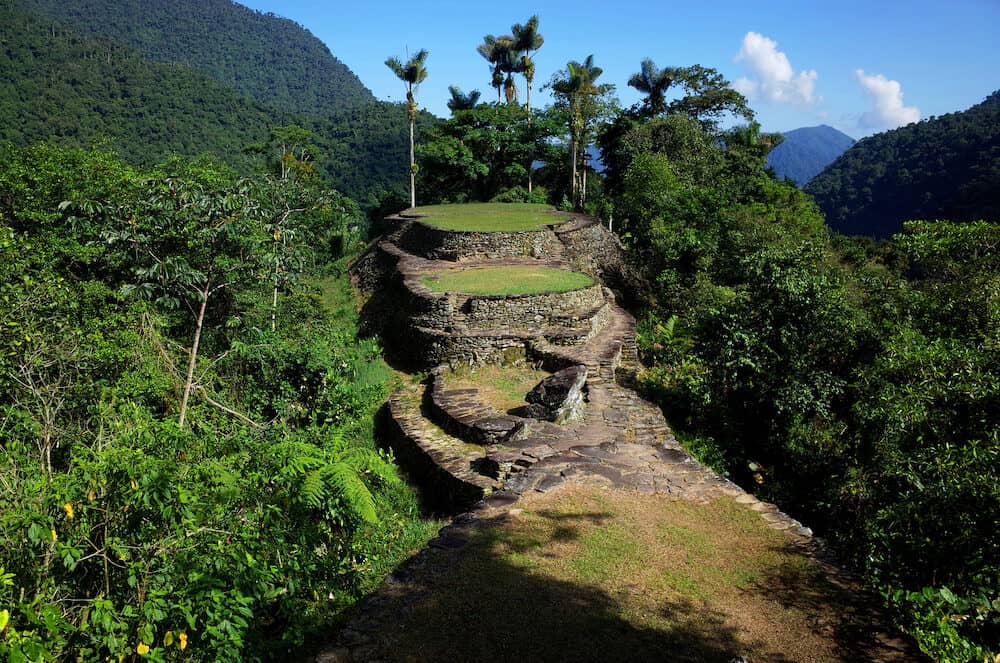
Get your Adrenaline Pumpin’
Adrenaline junkies will feel overwhelmed by the number of different things to do in Colombia. San Gil is the capital of adventure sports in the country. You can white water raft, paraglide, go canyoning, go caving, kayak, or go rappelling.
Each of these different sports has its respective tour, which is easy to book in town. My favorite outdoor sport is rock climbing, and there are two major crags I recommend in Colombia.
First, Suesca is about an hour and a half to the north of Bogotá. If you want to escape the city for a few days, I highly recommend checking it out. My favorite place to climb through is Chicamocha Canyon. The sandstone cliffs here provide excellent climbing, and the canyon itself is downright spectacular.
Colombia also has some great surf spots, notably Pradomar, Cabo Corrientes, and Playa Guachalito. No matter where you are in Colombia, an outdoor adventure is nearby. Do your research beforehand and you are bound to get your adrenaline pumping in no time.
Recommended tours:
- La Chorrera and El Chiflón Waterfall Hiking Adventure from Bogotá
- Medellín Paragliding Tour
- Full-Day Zipline, ATV, and Horseback Riding Adventure from Medellín
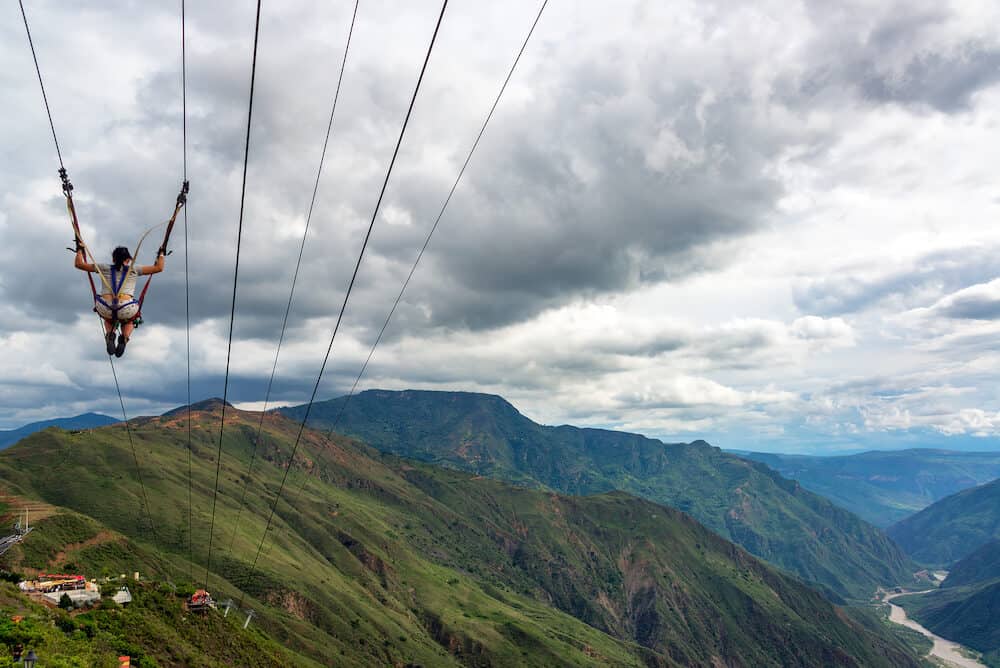
Appreciate Art
As I mentioned earlier, Colombia has a unique vibe that is full of charismatic energy. One thing that constantly draws me back to the country is the fact that art is found on just about every corner.
Music and dancing are notorious, but one art that is often overlooked is street art and graffiti. After I did a street art tour in Medellín, I noticed and appreciated street art everywhere I went after.
While Medellín and Cartagena both boast incredible graffiti scenes, they don’t compare to Bogotá.
The spotlight shines brightly on Bogotá. International critics often regard it as the best street art city in the world. You can wander around La Candelaría or Chapinero and you’ll see what I mean.
I recommend doing a tour to discover hard-to-find wonders and also to learn more about specific pieces. Colombia is a colorful country as is, but street art will have you feeling as if you are in a museum when you’re wandering down the street.
Recommended tours:
- La Macarena Gourmet Tour in Bogotá
- Fernando Botero Walking Tour of Medellín
- Medellín Street Art Tour
- Cartagena Art Tour
- Comuna 13 Graffiti Tour with Metrocable
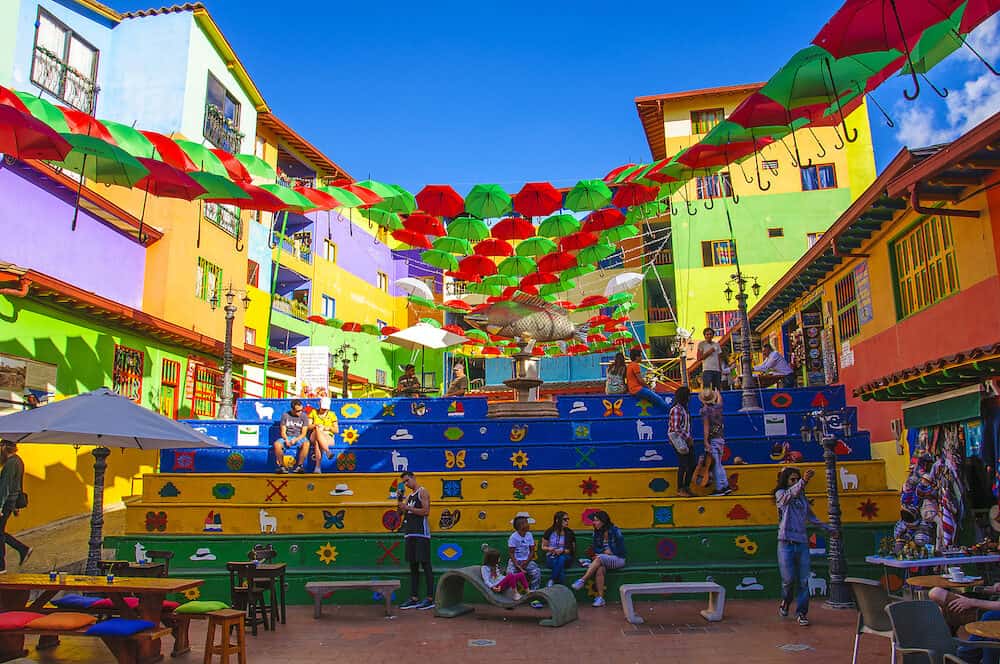
Step Back into Colonial Times
If it’s your first time visiting Latin America, you may be surprised by the history of different places. And while there are ancient cultures, like the Incas, that mystify us, they often overshadow the colonial history of the Spanish.
This history is filled with stories of conquest and blood, but there are also a handful of villages still around today that help us remember the time period. Going to places like Popayán, Villa de Leyva, Barichara, and Santa Fe de Antioquia feels like stepping back in time.
The cobblestone streets, white colonial buildings, and impressive cathedrals will fool you into thinking you’re in Europe. The villages are a museum themselves. However, there is typically an actual museum which provides context on the place itself. History buffs will love these villages.
Recommended Tours:
- Private Pablo Escobar, Pueblito Paisa and Medellin City Tour
- Cartagena Old Town Architecture Walking Tour
- Villa de Leyva Day Tour
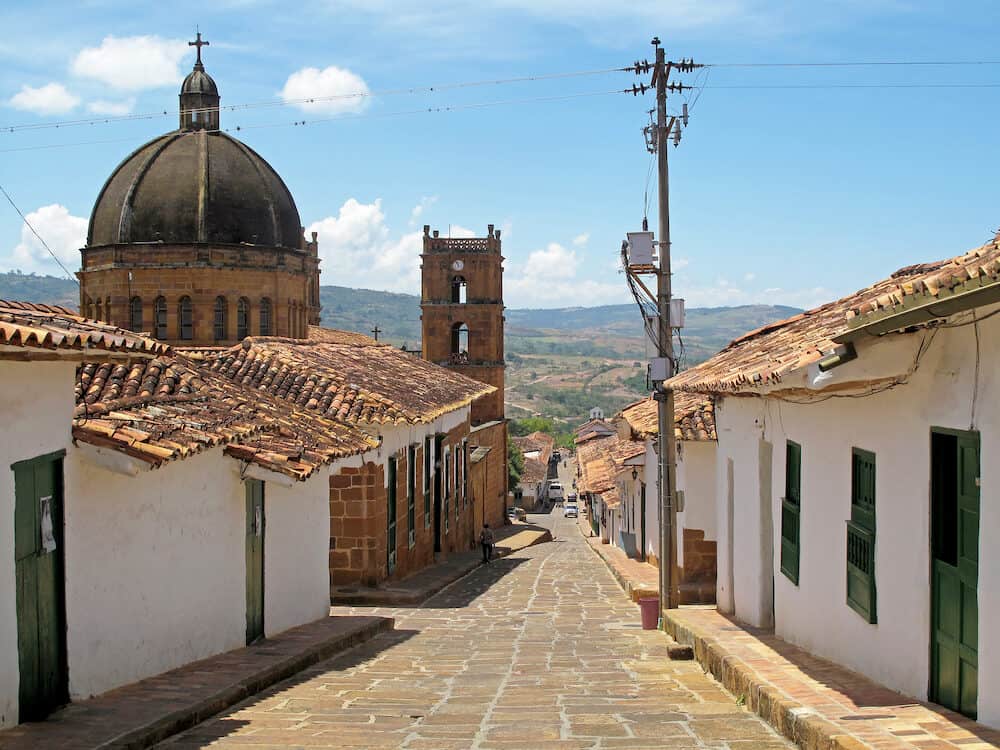
Places to visit in Colombia
Tayrona National Park
About an hour away from Santa Marta is one of Colombia’s most impressive wildlife and nature reserves, Tayrona National Park.
The best beaches in Colombia are found in Tayrona, but you’ll have to work in order to experience them. What makes the park special is the fact that there are hardly any roads. In order to get from place to place, you’ll need to hike!
But after exerting yourself, you’ll be rewarded with secluded beaches and pure relaxation. The main places to stay are Arrecifes, La Piscina, and El Cabo.
Each has a variety of accommodation options. Before leaving Santa Marta, be sure to stock up on all the necessary supplies for your stint in Tayrona.
Recommended tours:
- Wonderful Full-Day Tayrona Park Tour from Cartagena
- Private Speedboat from Santa Marta to Tayrona National Park
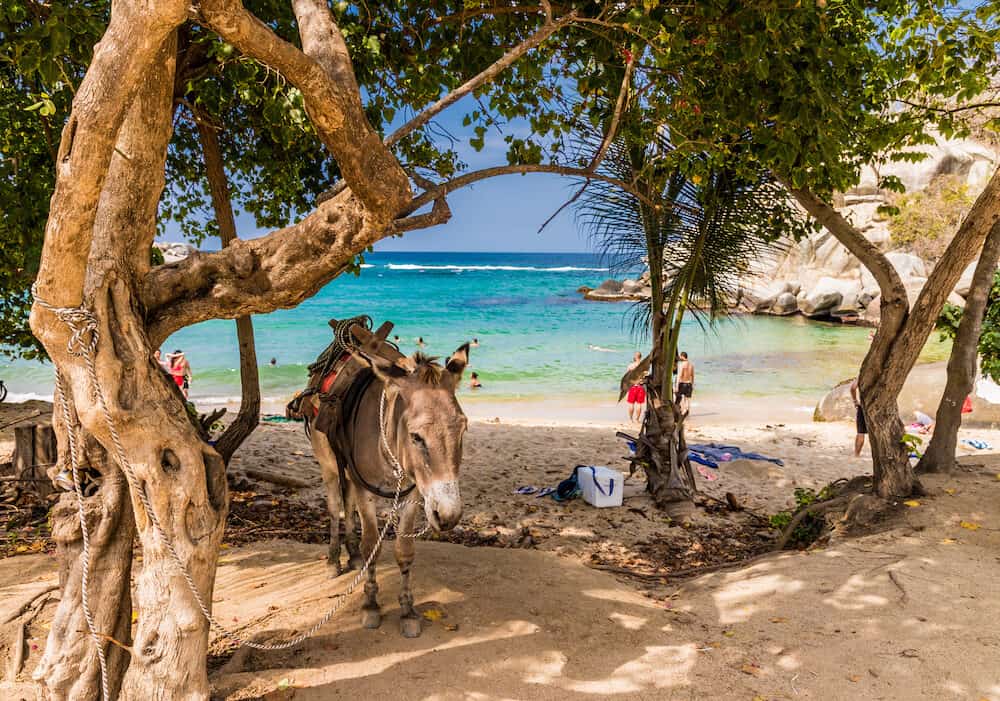
Cartagena
Cartagena is the most visited tourist destination in Colombia, and for good reason! The Old Town has so much charm and so much to do, you could spend your whole Colombian vacation here.
You can visit old Spanish castles, convents, and cathedrals, or step into one of the city’s many museums in order to learn even more. Getsemaní is Cartagena’s hipster hub. If you want to escape the tourist vibe and surround yourself with artists, head here.
One of the most popular day trips from Cartagena is to the Totumo Mud Volcano. This is certainly one of the most unique things to do in Colombia.
Finally, Cartagena is located right on the beach. The beaches in town are nice, but the Rosario Islands are the place where true beach fanatics will feel at home. Due to its proximity to the United States, it is often the cheapest place to fly into and start your Colombian vacation.
Recommended tours:
- Playa Blanca and Baru Island Day Trip from Cartagena
- Full-Day Rosario Islands Including Barú, Cholon and Playa Blanca
- Day Trip to Rosario Islands
- Baru and Playa Blanca Transportation and Lunch from Cartagena
- Snorkel and Island Hopping in Rosario and Cholon
- Half-Day Tour to Totumo Mud Volcano from Cartagena
- City Sightseeing Cartagena Hop-On Hop-Off Tour
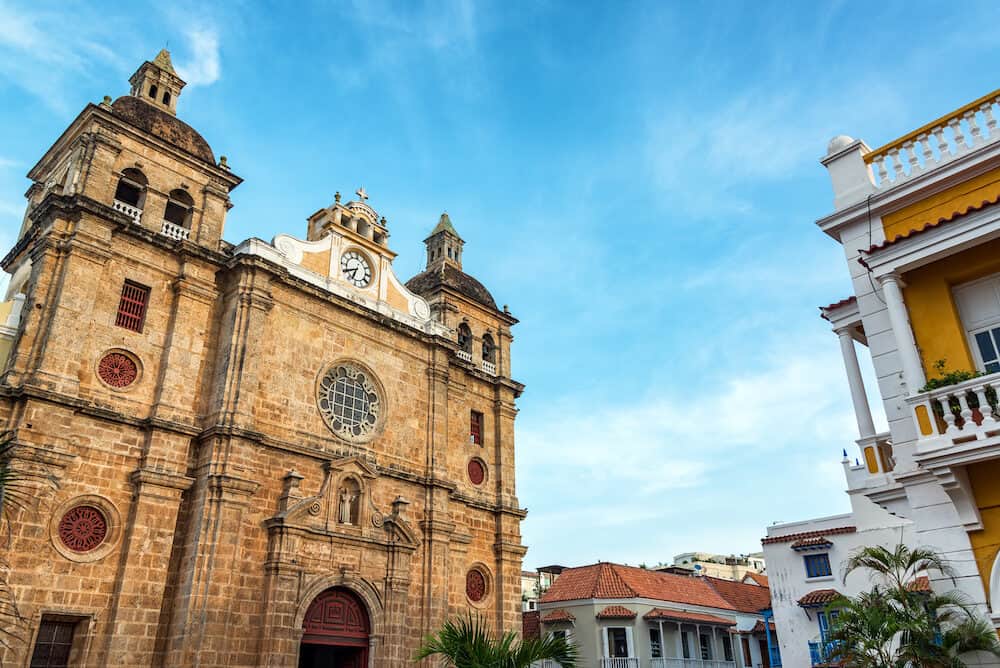
Medellín
Medellín is not the city that you think it is. What was once the murder capital of the world is now a modern, safe city that people are proud of. Paisas, or Medellín locals, go out of their way to diminish negative stereotypes and help you feel at home in the city.
Obviously, Pablo Escobar related activities are one of the main tourist attractions in the city. However, Medellín is the place to come in order to experience true Colombian life.
Go out for a night in Poblado or dance salsa in Laureles, and you’re guaranteed to meet tons of locals. You can also visit the city’s Botanical Gardens, Parque Arví, or Pueblito Paisa.
Because of its location in a valley, you are guaranteed incredible panoramic views from just about everywhere in the city. Medellín is home to a ton of digital nomads and aspiring Spanish learners.
So if you plan to stay in Colombia for longer than a few weeks, it’s a great home base. Be careful! Once you settle in here, it can be hard to leave. (Trust me, I lingered for four months…).
Recommended tours:
- Private Half-Day Pablo Escobar Godfather Tour in Medellin
- Full-Day Guatapé (Pueblo de Zocalos) from Medellín
- Jardín Day Trip: Colombian Coffee and Sightseeing Tour from Medellín
- Medellin City Private Tour
- Medellín ATV Tour
- Medellín Street Art Tour
- Horseback Riding Adventure from Medellín
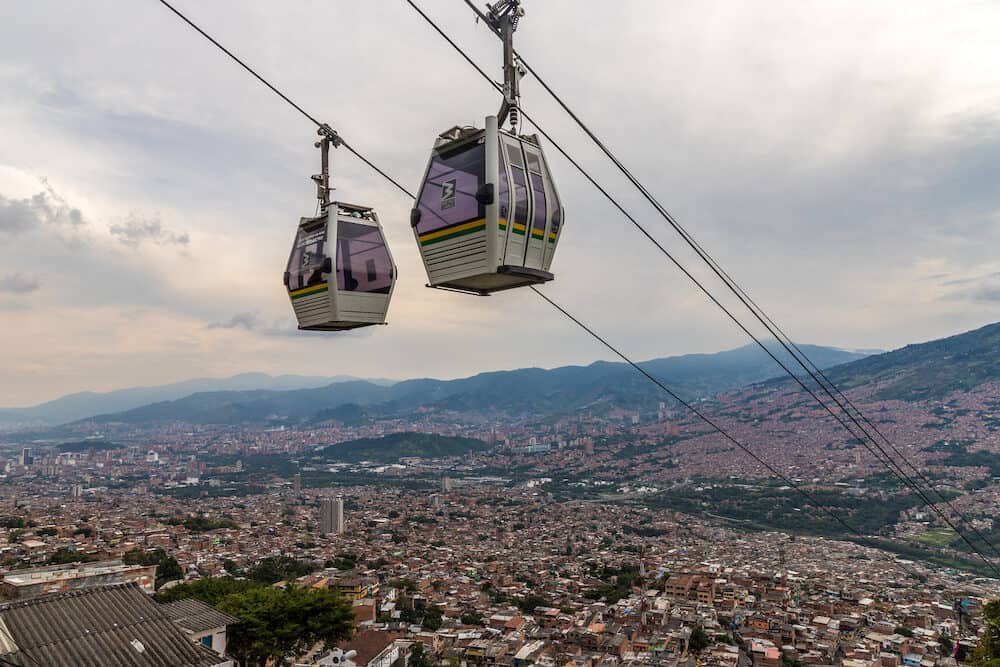
Guatapé
Guatapé is located about 3 hours away from Medellín, making it a great day trip or weekend escape. Guatapé is a colorful village built on the edge of a massive lake.
When I was visited, my friends and I rented motorcycles and explored the whole surrounding area. On our way to check out some massive waterfalls, we passed through small villages and sampled local street food.
The biggest attraction though is El Peñol, a massive rock that seems completely out of place. There are stairs built on the side of the rock allowing you to reach the top for an awesome view. If you want a true adventure, inquire about climbing the rock. Guatapé is one of the best places to visit in Colombia.
Recommended tours:
- El Peñol and Guatape Private Tour from Medellin
- Guatape Tour, Piedra del Peñol Including a Boat Tour
- Guatapé and Peñol Rock Full-Day Tour
- Full-Day Private Guatape Coffee Villa Tour from Medellin
- Private Tour To Guatape From Medellin
- Private Tour: El Peñol and Guatape Dam from Medellin
- Full-Day Guatapé (Pueblo de Zocalos) from Medellín
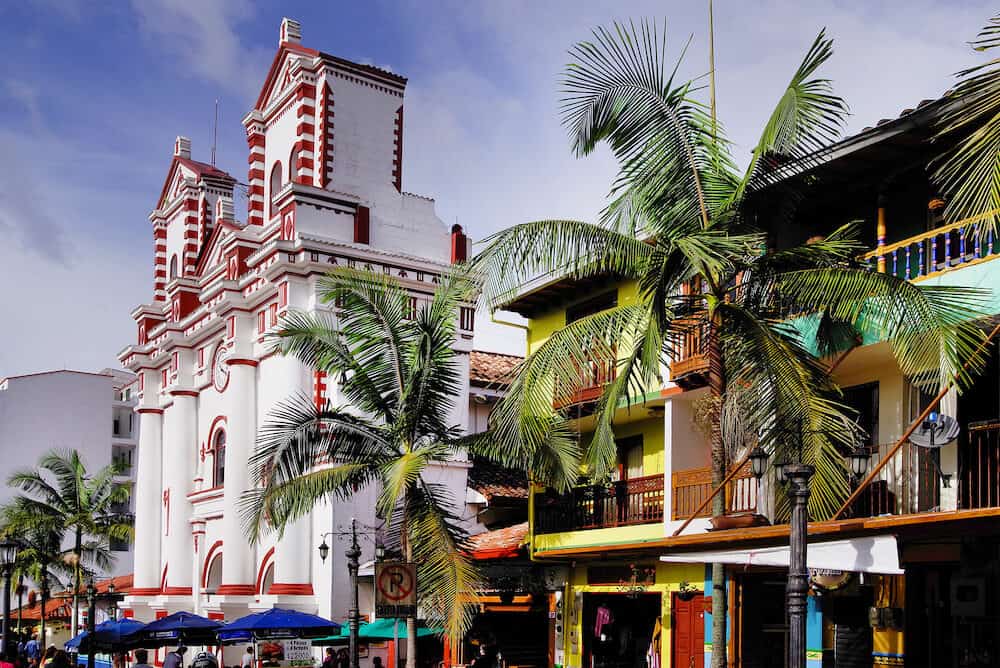
San Agustin
Are you a history nerd? If so, stop by San Agustín, one of Colombia’s most impressive UNESCO World Heritage Sites.
San Agustín is the best launching point to see a handful of Pre-Colombian statues and archaeological sites. Be sure to bring your hiking shoes to San Agustín!
Each day you can hike and explore the historical sites, only to come back in the afternoon and relax in town.
If you’ve had enough history, there are also a handful of enchanting waterfalls nearby. I highly recommend San Agustín to all types to travelers!
Recommended tours:
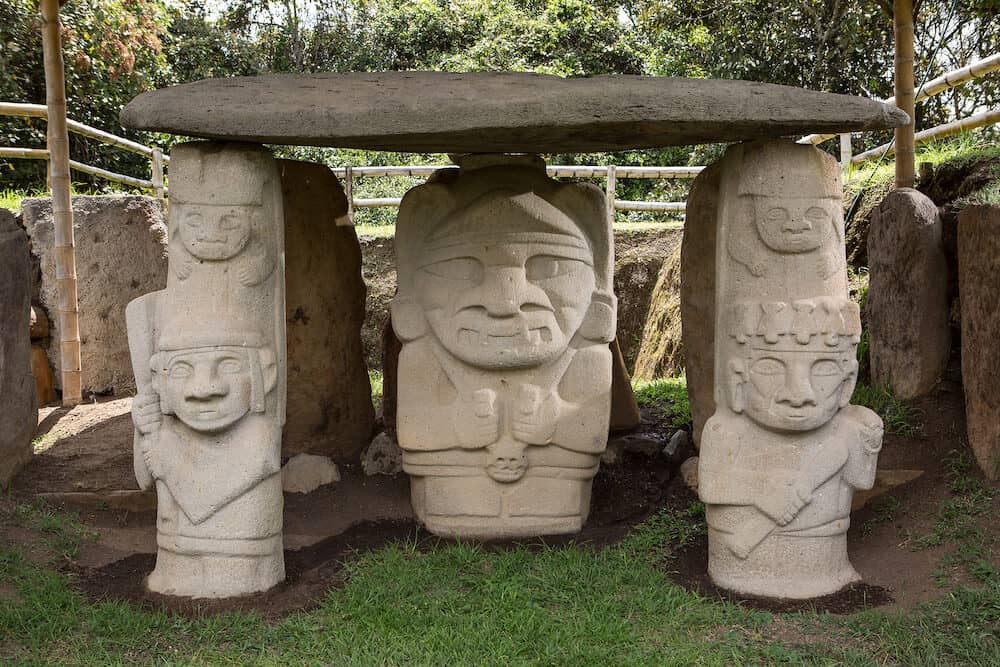
Cali
One of the most popular street art pieces in Cali simply says “Cali es Cali”, or “Cali is Cali”. There is simply no way to describe the unique vibe of this place.
Cali may be located in the mountains, but its proximity to the Pacific coast gives it more of a lax, beach feel. On top of that, it’s the salsa capital of Colombia.
People here are always dancing. If you want to learn how to dance, come to Cali and you can easily find yourself a teacher.
Like Medellín, Cali is a great city to spend an extended period of time and really get a feel for the city. San Antonio is where most travelers stay because of the large number of restaurants, hotels, and bars.
However, it is also the colonial center of the city. If you travel in order to experience new cultures to the fullest, I recommend coming to Cali.
Recommended tour:
- Official Salsa Bootcamp
- Coconuco Biking & Thermal Springs
- Mountain Bike Tour – Ride And Discover Our Beautiful Mountains
- Pico De Loro Hike – Experience A Challenging Trek In Our Beautiful Mountains
- River Adventure – Enjoy An Afternoon Of Nature And Tubbing In San Cipriano
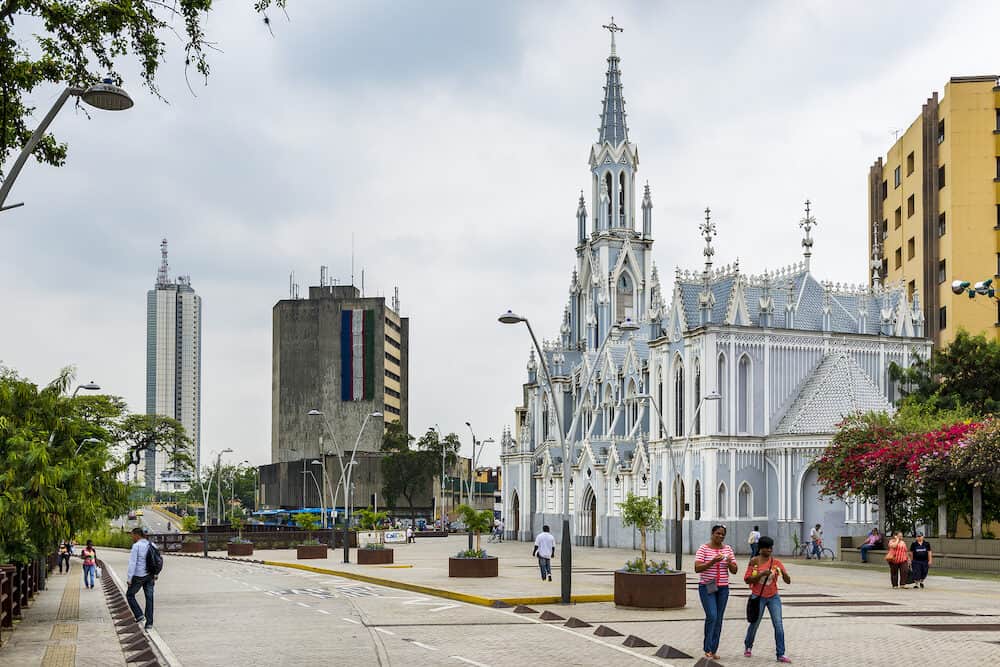
Bogotá
Bogotá is not only the capital of Colombia, but it’s also the world’s capital for street art. Once you start wandering around Chapinero or Candelaría, the amount of artwork is overwhelming.
Bogotá is one of the largest cities in all of the Americas, which means you can find just about anything here. La Candelaría is the tourist center of the city.
Most of the city’s museums are located in the neighborhood, but you can also find good places to stay. Chapinero is another popular area of the city, especially for nightlife.
Don’t forget to take the rail car up to the top of Monserrate for a spectacular view of the sunset behind the city. People either love or hate Bogotá.
Sure, it’s crowded and traffic is horrendous. However, once you find your niche in the city, you’ll be recommending it to everyone you meet.
Recommended tour:
- Los Nevados National Park 3-Day Trip from Salento
- Bogotá City Sightseeing Tour with Optional Lunch and Cable Car Ride
- Half-Day Guided Tour of Zipaquirá Salt Cathedral from Bogotá
- Cartagena City Tour
- La Chorrera and El Chiflón Waterfall Hiking Adventure from Bogotá
- Zipaquira Salt Cathedral and Lake Guatavita from Bogota
- La Candelaria, Mount Monserrate and Museo del Oro in One Day in Bogota
- Medellín Paragliding Tour
- Bogotá Beer Company’s Brewery Tour
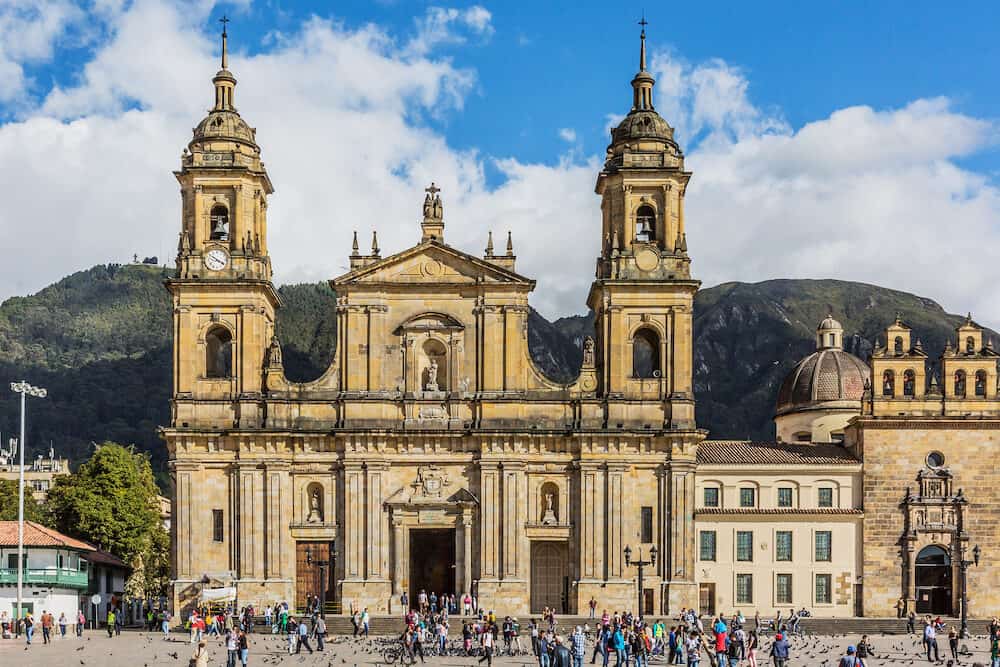
San Andrés Islands
Colombia is a true cultural destination, but it also has a luxurious side. The San Andrés islands are the place to go if you are looking for a true beach vacation.
Although the islands are located near Nicaragua, there are plenty of flights that leave from Bogotá, Medellín, and Cartagena.
Here, the crystal clear water allows for near perfect visibility for scuba diving and snorkeling. You can also partake in a bunch of other water sports, like jet skiing, kite surfing, kayaking, or windsurfing.
While it’s fun to get your blood pumping, the best thing to do in San Andres is sit back, relax, and enjoy the view. Stress doesn’t exist on the San Andres Islands.
Recommended tours:
- Aquanautas Helmet Diving in San Andres
- Semi-Submarine Manatí or Nautilus Experience in San Andrés
- White Nights Tour
- 2 Days 1 Night in Providencia Island
- Transparent Kayak Tour
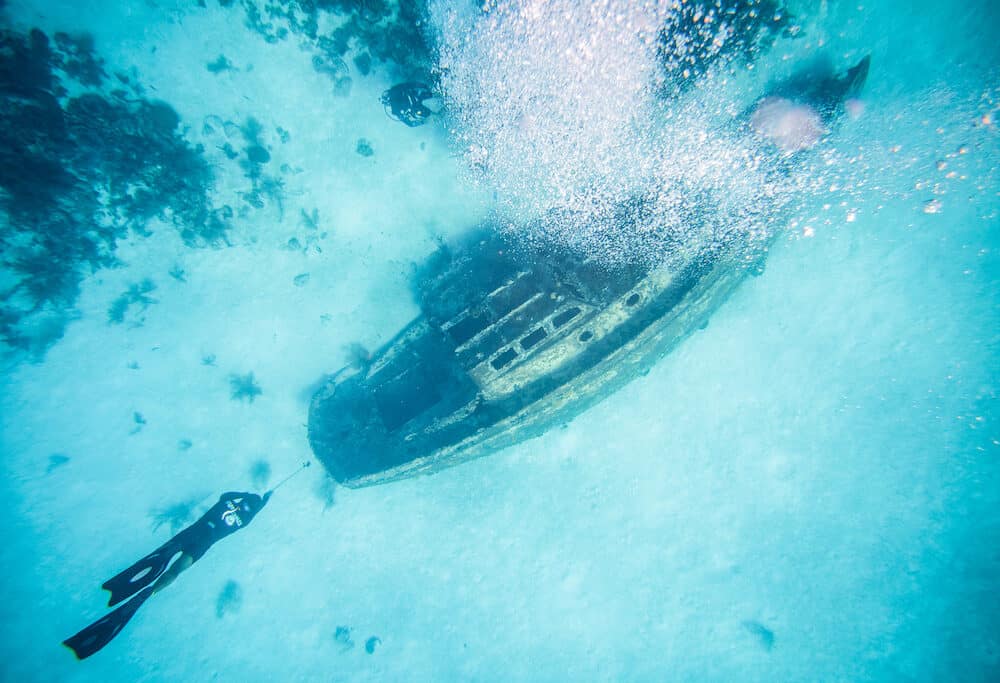
Salt Cathedral of Zipaquira
There are plenty of day trips to do outside of Bogotá, but the Salt Cathedral of Zipaquira is arguably the most breathtaking.
This salt mine 200 meters underground was converted into a Catholic Church in the 1930s, but the history runs much deeper than that.
The salt mine has been exploited ever since 500 BCE. On your day trip here, you will learn the whole story of this magnificent piece of architecture.
Recommended tours:
- Zipaquira Salt Cathedral
- Mine of Nemocón and Cathedral of Salt in Zipaquirá
- The Salt Route: Nemocón Salt Mines and Zipaquirá Salt Cathedral from Bogota
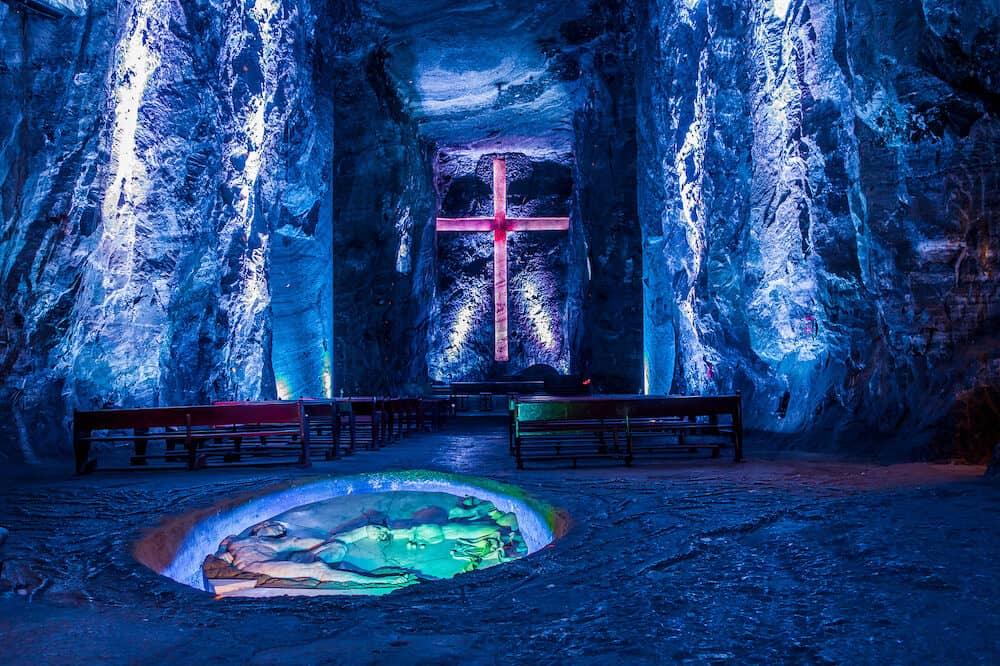
What to eat in Colombia
Colombian food is as diverse as the country itself. You’ll find fresh fruits and vegetables adjacent to fried food stands on street corners all over the country.
Snack food is accessible too, but you will also be able to find large, traditional meals like the Bandeja Paisa. The best part of Colombian cuisine for travelers though is the menú del día or “menu of the day”, which costs anywhere from 6,000 COP to 12,000 COP.
The meal typically consists of juice, soup, rice, beans, roasted vegetables, and grilled meat. This is the most typical meal in Colombia and is the best way to save money when traveling. If you want a challenge, try and eat an entire bandeja paisa to yourself.
Bandeja paisa is the traditional dish of Medellín and consists of ground beef, chorizo, chicharrón, friend plantain, beans, rice, avocado, and an arepa.
The dish can easily feed two people, which is why I recommend sharing your first one. You can’t leave Medellín without having tried this popular dish, but it’s also found at other places around the country. Colombians also love their thick, hearty stews.
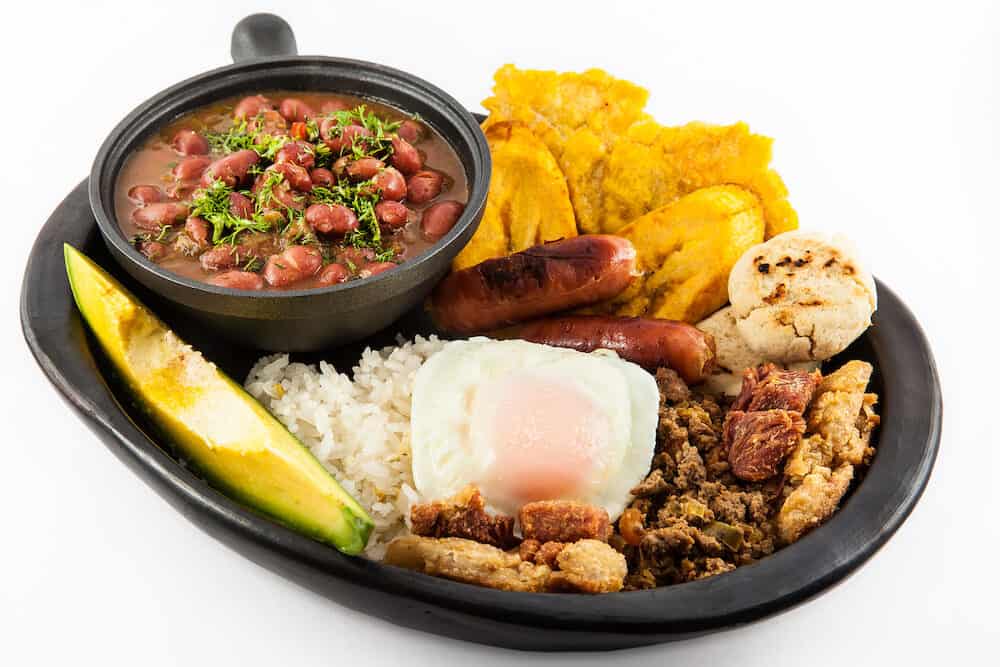
Sancocho is a common dish that is served differently depending on where you find yourself eating. Fish is used as the protein on the Caribbean coast, whereas pork and chicken are used more in the country’s interior.
Yuca, plantain, potatoes, and carrots are other common ingredients found in Sancocho. Another two that they love are Ajiaco and Mondongo.
Ajiaco is made with chicken, three different types of potatoes, and a collection of Colombian herbs. Mondongo, on the other hand, is a stew made with many different things.
Tripe is the essential ingredient, but you’ll also find chorizo, pork, corn, potatoes, onions, yuca, and a handful of different herbs and spices.
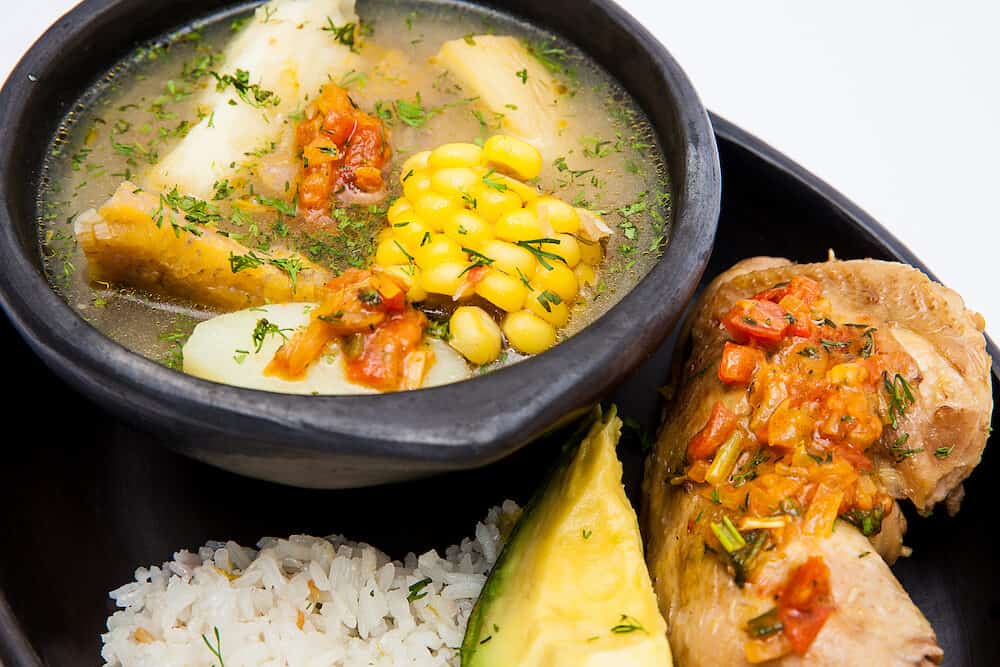
Colombians love their big family gatherings with hearty, meat-filled meals. Un Asado is a traditional Colombian barbecue with a large variety of meats, fried plantains, and arepas.
Lechona is another common food served at large gatherings not only in Colombia but all around South America. A Lechona is a roasted, stuffed pig that is cooked for around 12 hours and then served with fried rice.
It’s rare to go to a Colombian party and not drink aguardiente, a liquor made from sugar cane served all over the country.
Be careful though, Colombians can really put this stuff down. I’ve found myself trying to keep up, and then regretting it later in the evening. If you like to party, you’ll have a lot of fun trying the different liquors and beers of Colombia.
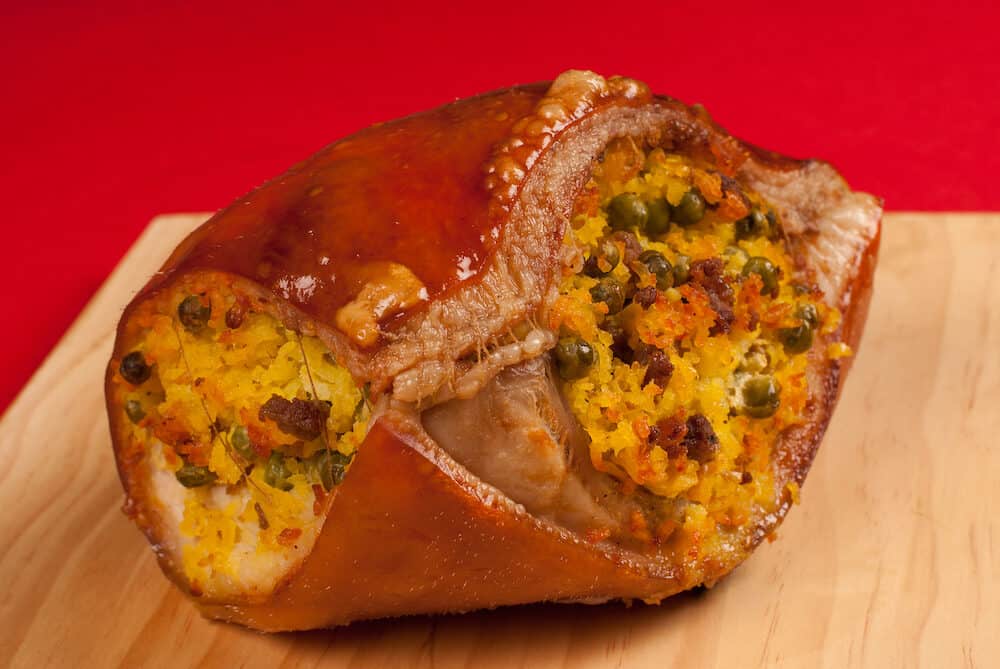
My favorite thing to do in a new country is wander around and sample street food. I fell in love quickly with Colombia for this reason. It seems like people are always snacking in Colombia.
There are so many different street foods and snacks to try. When you first start walking around the streets of Colombia, you won’t miss all of the vendors selling delicious smelling treats.
The most popular of snacks is the empanada, a deep-fried pastry stuffed with meat, rice, beans, cheese, or whatever the vendor decided to throw in.
It’s common to see people gathered around an empanada, chatting, and jostling in position for the special sauces that accompany empanadas. Other common street snacks in Colombia are arepas de choclo, buñuelos, and pan de bono.
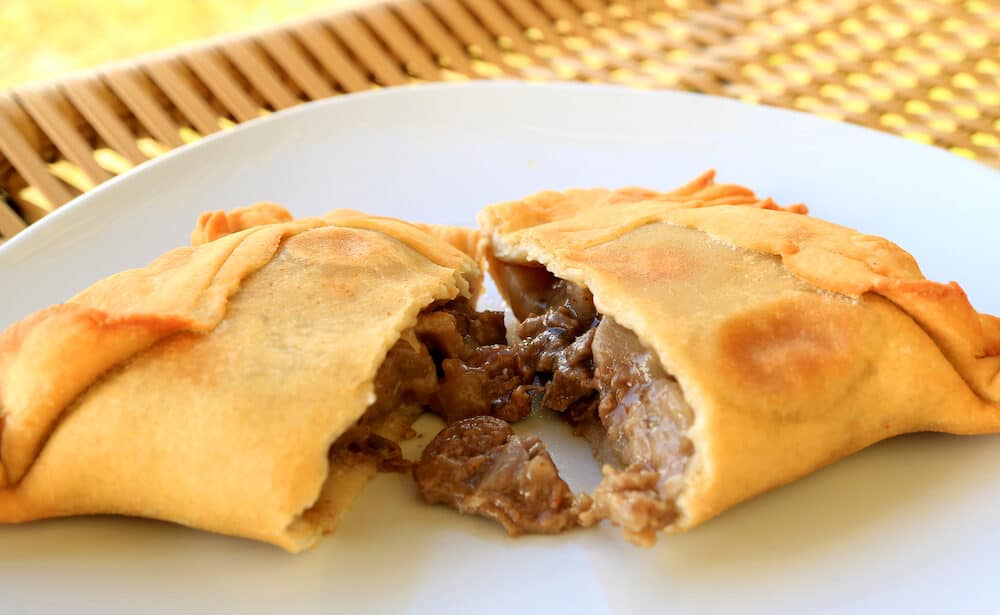
These snacks are delicious alone, but what really makes their flavor come alive is Colombia’s most popular export, coffee. Coffee is served just about everywhere in Colombia.
There are artisanal cafés which serve up the country’s best, but also vendors who carry around a thermos and sell a daily brew. Tinto is the word that locals use to order black coffee and then proceed to put in an unhealthy amount of sugar. I love coffee, which is one of the reasons I feel at home in Colombia.

Where to stay in Colombia
The hospitality industry has responded favorably to the rise of tourism in Colombia. Each major city is filled with hostels for budget travelers. In fact, chain-hostels like Selina and El Viajero are in multiple cities in Colombia and offer discounts for staying at their multiple locations.
In the coffee-growing region, there are lots of small towns that have just a single hostel where travelers unite. Airbnb is also a great option when staying in Medellin Colombia.
My favorite place is The Panorama hostel in Buena Vista. Staying true to its name, this place has excellent views of rolling mountains and coffee farms.
A hostel can make or break your experience of a town or city, which is why I recommend doing research beforehand. If you plan to settle for the cheapest option, expect to stay in a sub-par place. Hostels in Colombia are very accommodating to long-term visitors.
It seemed like almost every hostel I stayed at had someone who was volunteering in exchange for a free stay. If this is something you are interested in, don’t hesitate to inquire with the owner.
In Colombia, a few more pesos will go a long way in terms of lodging. If you want luxury, I recommend staying in boutique hotels in Cartagena. Colombia is full of character, and each hotel seems to have its own story.
Whether the hotel is set in a massive skyscraper or an old colonial building, your hosts will likely stay up late with you exchanging stories, dancing salsa, or teaching you Colombian slang. Colombians are very hospitable people.
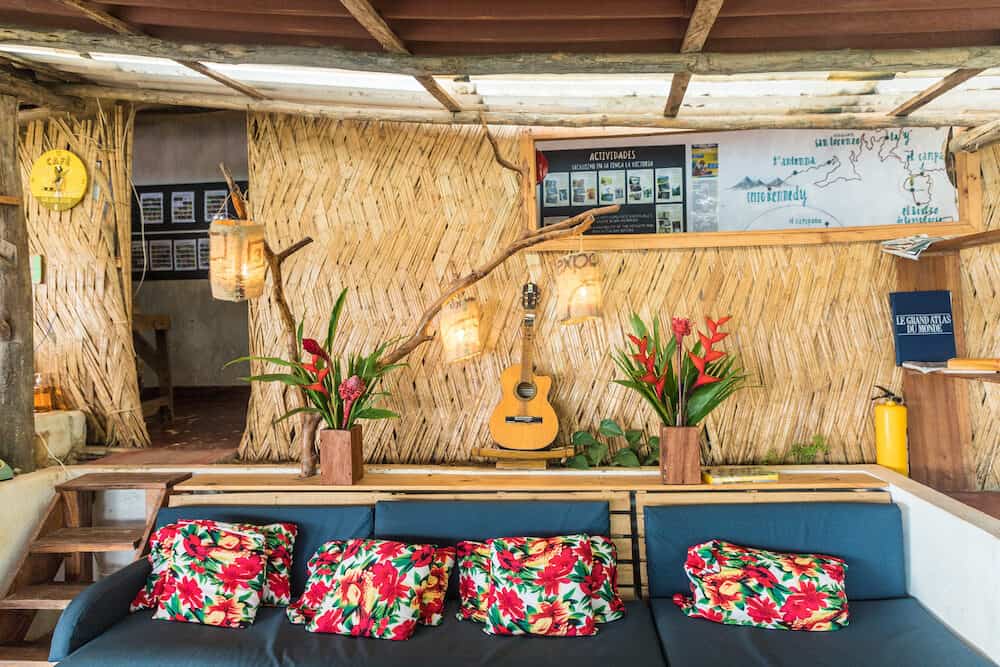
One boutique hotel I highly recommend is The Charlee, located in the Poblado district of Medellín. The highlight of this property is the rooftop bar, which overlooks the entire city.
Even though you’ll be located right next to some of the best nightlife in Colombia, you won’t want to leave this hotel bar. When it closes at 2, the night is just getting started in the streets below. That’s right, Colombians like to party into the early morning. If you are looking for a wild time in Medellín, the Charlee is the place for you.
Maybe partying isn’t your thing though. I get it, trust me. If intimacy with nature is what you are looking for, you should try and stay in one of Colombia’s new eco-hotels.
These are popping up all over the place, especially in Colombia’s Nuqui province. Nuqui is famous for two things– its stellar beaches and the opportunity to whale watch. One eco-hotel that blends these two experiences with ecological and social responsibility is El Cantil.
A portion of the profits of this place goes to social programs in the community. They also offer tons of different things to do for their guests, like surfing, kayaking, snorkeling, and whale watching.
It may be a bit of a hassle to arrive at El Cantil, but the effort is worth the secluded experience. While online research is helpful in finding awesome properties, there is nothing better than word of mouth referrals. If you are open to recommendations, you may stumble across one of Colombia’s many hidden gems.
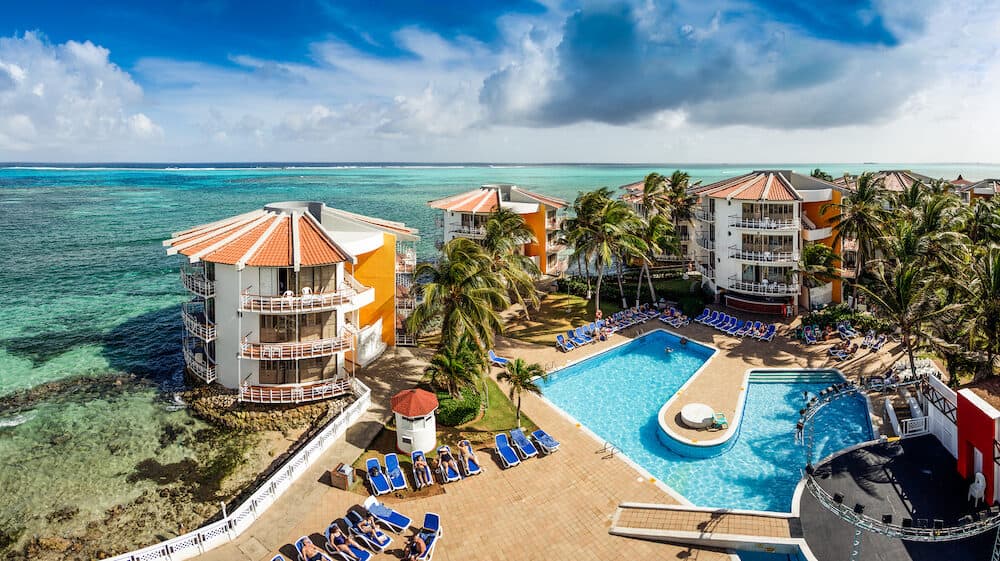
Tours to do in Colombia
Comuna 13 is a neighborhood that embodies the radical transformation of Medellín. This neighborhood was once the most dangerous in Medellín but now is filled with street art, break dancing, and a massive escalator.
Doing a tour with a local allows for a much more intimate experience and also supports local community efforts. 10/10 would recommend!
Bogota has it all, especially in regards to nightlife. There are places to dance salsa, reggaeton, techno, or any other sort of music you could imagine. Bogota also is home to some of the largest clubs in the world, like Theatron.
If you’re new to the city, doing a nightlife tour can help you experience all of the famous places in the city. Bogota is known to have some of the best nightlife in South America. Trust me, you are bound to have a fun night on this tour.
This food tour of Cartagena explores the city’s rich culinary scene. Cartagena is a melting pot of different cultures, and the food is very indicative of that. Don’t eat before this tour! You’ll have the opportunity to sample a ton of food and will want to try as many things as possible.
Netflix made Medellín a popular city to visit for one reason– Pablo Escobar. While his story may be compelling, it is important to respect those impacted by his violent power.
You will be able to visit important sites during this tour, like his prison, his tombstone, and one of his many properties. Be sure to come on this tour with a respectful attitude. Pablo Escobar is not to be revered but instead understood to ensure that the same history is not repeated.
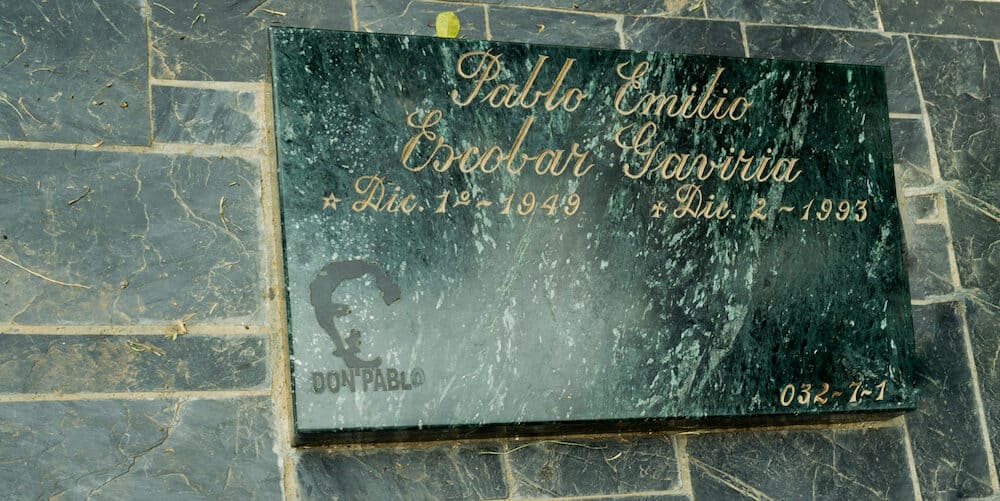
Day trips from Colombia
Bogota to Nemocon Salt Mines and Salt Cathedral of Zipaquira
This tour offers an in-depth experience of salt mining outside of Bogota. Combining these two popular destinations into one tour makes for a comprehensive educational experience. If you are planning to visit the Salt Cathedral of Zipaquira, consider this tour for a unique experience.
Cartagena to Rosario Islands Tour
This full day tour visits the pristine beaches of the Rosario Islands, like Barú, Cholon, and Playa Blanca. This all-inclusive tour makes takes away the hassle of entrance fees, transportation, and meals. The white sand beaches and crystal clear water offer the most picturesque background for a relaxing day-trip.
Cali to Popayan History and Culture
Popayan is one of Colombia’s colonial artifacts. By booking this private tour from Cali, you’ll be able to learn about the compelling history of Spanish colonization and early Colombian culture. If you are interested in religion, I would recommend this tour. It really dives into the church’s impact in the Spanish conquest of the Americas.
Medellín to Santa Elena Flower Farm Cultural Tour
Colombia is the largest exporter of flowers in the world. The small villages surrounding Medellín are home to some incredible flower farms, which you can easily visit on a day trip from the city. On this trip, you’ll learn all about the flower industry from a silletero, or someone who works with the flowers on a daily basis. Medellín has so much to offer and this tour is one of the many I recommend.
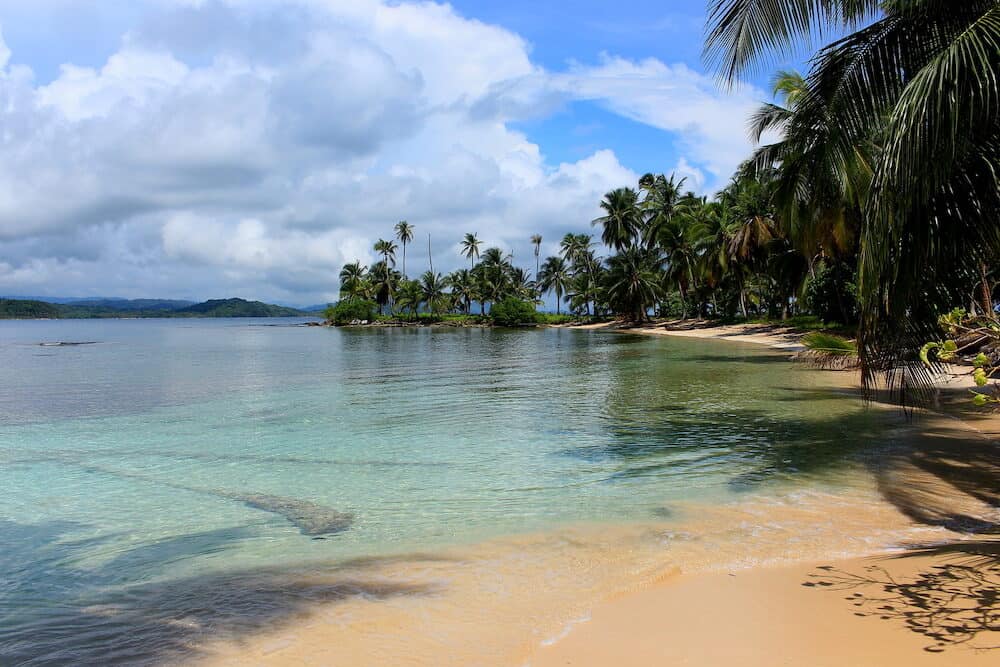
Recommend budget tours in Colombia
- Playa Blanca and Baru Island Day Trip from Cartagena
- Private Half-Day Pablo Escobar Godfather Tour in Medellin
- Full-Day Rosario Islands Including Barú, Cholon and Playa Blanca
- Half-Day Guided Tour of Zipaquirá Salt Cathedral from Bogotá
- Cartagena City Tour
- Cartagena City Tour: History, Culture and UNESCO World Heritage Sites
- Zipaquira Salt Cathedral and Lake Guatavita from Bogota
- Medellin City Private Tour
- Day Trip to Guatapé from Medellín
- Jardín Coffee Lovers Private Tour with Waterfall Option from Medellín
- Private Rosario Islands and Baru Boat Tour
- Guatape Tour, Piedra del Peñol Including a Boat Tour
Get your guide is a Great company, that often offers heavily discounted tours! Check out a few options below:
If you’d like to save it for later, please save it to Pinterest.
